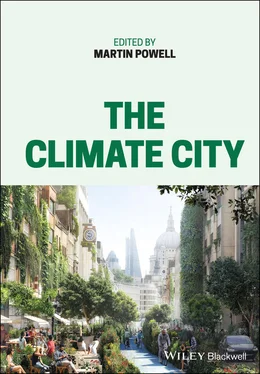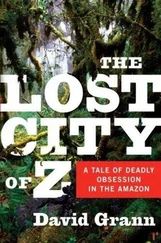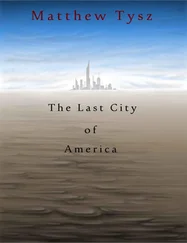The Climate City
Здесь есть возможность читать онлайн «The Climate City» — ознакомительный отрывок электронной книги совершенно бесплатно, а после прочтения отрывка купить полную версию. В некоторых случаях можно слушать аудио, скачать через торрент в формате fb2 и присутствует краткое содержание. Жанр: unrecognised, на английском языке. Описание произведения, (предисловие) а так же отзывы посетителей доступны на портале библиотеки ЛибКат.
- Название:The Climate City
- Автор:
- Жанр:
- Год:неизвестен
- ISBN:нет данных
- Рейтинг книги:4 / 5. Голосов: 1
-
Избранное:Добавить в избранное
- Отзывы:
-
Ваша оценка:
- 80
- 1
- 2
- 3
- 4
- 5
The Climate City: краткое содержание, описание и аннотация
Предлагаем к чтению аннотацию, описание, краткое содержание или предисловие (зависит от того, что написал сам автор книги «The Climate City»). Если вы не нашли необходимую информацию о книге — напишите в комментариях, мы постараемся отыскать её.
Provides professionals in finance, technology, and consulting with solutions for improving the quality of urban life under the changing climate The Climate City
The Climate City:
The Climate City
The Climate City — читать онлайн ознакомительный отрывок
Ниже представлен текст книги, разбитый по страницам. Система сохранения места последней прочитанной страницы, позволяет с удобством читать онлайн бесплатно книгу «The Climate City», без необходимости каждый раз заново искать на чём Вы остановились. Поставьте закладку, и сможете в любой момент перейти на страницу, на которой закончили чтение.
Интервал:
Закладка:
Sophie Hæstorp Andersenhas been the Lord Mayor of the City of Copenhagen since January 2022. She has the overall responsibility of the city’s plan to half CO2 emissions from citizens’ consumption towards 2035, half CO2 emissions from the municipality’s own procurement in 2030 and be the first carbon neutral capital after 2025 and climate positive with phasing out biomass before 2035. She is currently working on identifying the next steps of action to ensure the city reaches its goals.

By virtue of her role as Lord Mayor, Sophie Hæstorp Andersen is the chairwoman of Greater Copenhagen in 2022. Greater Copenhagen is a collaborative organisation promoting sustainable growth and development in the largest Nordic metropolitan area with 4,4 million citizens across 85 municipalities and 4 regions in Southern Sweden and Eastern Denmark. During her chairwomanship she aims to drive forward green growth, development, and collaboration across the entire region.
Before her time as Lord Mayor, she was chairwoman of the Region Council in the Capital Region in Denmark from 2014–2021 and member of the Parliament for the Danish Social Democratic Party from 2001–2005 and 2007–2014. Sophie Hæstorp Andersen holds a master’s degree in Political Science from University of Copenhagen.
Mark Watts and Sarah Lewis
The Powerful City– The chapter takes a look at how entrepreneurial big-city mayors drive progress on climate change through bold and innovative action. Cities are where the future happens first.

Mark Wattsis Executive Director of C40 Cities, a network of the mayors of the world’s 100 most powerful cities. C40’s 250 + international staff support mayors to deliver the most ambitious science-based climate action, focused on halving global emissions within a decade while reducing poverty and inequality. Prior to joining C40 in 2013, Mark was Director at pioneering engineering and design firm Arup, and before that was a senior adviser to the Mayor of London, in which role the London Evening Standard described him as “the intellectual force behind Ken Livingstone’s drive to make London a leading light of the battle against global warming”. In addition to being a climate activist, Mark’s other passions are music, mountain running, narrowboats, and exploring places you can get to by bicycle.

Sarah Lewisis a Research Assistant with C40 Cities. Prior to this, Sarah worked as a medical secretary and hospital care assistant. In her spare time, Sarah blogs about sustainable lifestyles and has been interviewed for the BBC, The Guardian , The Times , and ABC’s Future Tense Podcast on circular economy and low-consumption lifestyles. She was also a theatre critic for the Hackney Citizen newspaper for a number of years. Sarah holds an MSc in Sustainable Resource Economics, Transitions and Policy from University College London. Her dissertation focused on municipal energy companies in the UK. She also holds a BA in Middle Eastern Languages from the University of Manchester, and has lived in Alexandria, Jerusalem, Tel Aviv, the West Bank, and Amsterdam, as well as London. Sarah enjoys cycling, yoga, hiking, and beaches.

Introduction
Martin Powell
If you walk along London’s embankment, you can see a gleaming river, lots of trees lining the streets, clean streets, some expansive green spaces and open areas, and Peregrine falcons nesting and flying between the buildings, and you breathe clean air.
Actually, none of that is entirely true. The river is regularly filled with sewage after heavy rain when the Victorian sewers merge storm water with sewage and the overflow goes into the Thames. This is being resolved with a super sewer being bored under the river as you read this. There are not enough street trees, but they are planted and added every year across the city. The green spaces are generally eroded over time. The wildlife is there to be seen, including the Peregrine falcons, but it is not exactly teeming with life, and the air regularly exceeds the World Health Organization (WHO) limits, as do all big cities, with some streets in constant breach of air quality limits.
It’s not good enough, but the reason London is considered a successful city is that it’s better than most. It’s moving faster than most to rectify these problems, which are constantly exacerbated by a rising population, a rising demand for goods, changing demographics, changing habits, and, above all, the need to mitigate and adapt to the existential threat of climate change.
An Expanding Problem
A staggering two billion people live in extreme poverty and 789 million people do not have access to electricity. 1Many of these people will seek a new life in the city, they will seek employment, and they will seek a home. They will join the rest of the population as consumers of energy and water, and makers of waste, and demand will go up. We have no right to deny anyone this opportunity, but it makes the challenge of reducing CO 2emissions even greater.
If you look back in history, all of the great cities have progressed through economic focus and trade and always to the detriment of the environment. This has, in nearly all cases, been a problem that has reached a critical level, public outcry has ensued, and the error rectified. If I were a true cynic, I would say this is how we solve all of our problems. This constant iteration of growth and advancement followed by a “fix” is what has enabled this walk along the London embankment to be all the more remarkable. Cities through time have developed governance structures that are so in tune with the life of the city that the problems can be identified, captured, analysed, debated, and “fixed” without upsetting all of the other critical elements that make city life so enchanting.
The myriad of governing entities developed over time are able to respond and enact new policy, with the benefits to the wider city being the overriding decision. Perhaps this is what was so troubling about the rapid rise of ride-sharing. They just came. They used public advocacy for cheaper and more convenient travel but at a cost to the overall balance of city life. I don’t blame the ride-sharing companies who see this service as invaluable to the citizen, and there is clearly demand for their service, but they can’t possibly understand or calculate the overall impact to the whole city population.
In his book If Mayors Ruled the World: Dysfunctional Nations, Rising Cities , 2Benjamin Barber makes the case that modern cities are best poised to meet the challenges posed by the global economy. Ben’s book reflects on urban manifestoes with the theme that local governments are uniquely positioned to save the planet. Bruce Katz and Jennifer Bradley made this case in The Metropolitan Revolution . 3Ben advocated for a parliament of cities, which would ratify a shift in power and political reality that, he argues, has already taken place.
Читать дальшеИнтервал:
Закладка:
Похожие книги на «The Climate City»
Представляем Вашему вниманию похожие книги на «The Climate City» списком для выбора. Мы отобрали схожую по названию и смыслу литературу в надежде предоставить читателям больше вариантов отыскать новые, интересные, ещё непрочитанные произведения.
Обсуждение, отзывы о книге «The Climate City» и просто собственные мнения читателей. Оставьте ваши комментарии, напишите, что Вы думаете о произведении, его смысле или главных героях. Укажите что конкретно понравилось, а что нет, и почему Вы так считаете.











